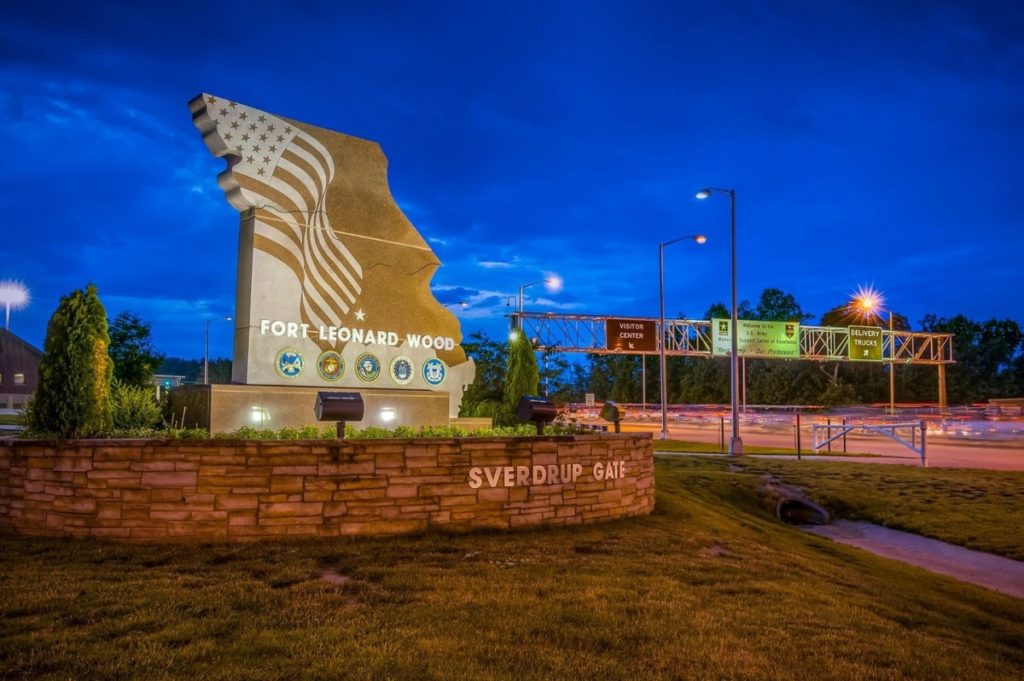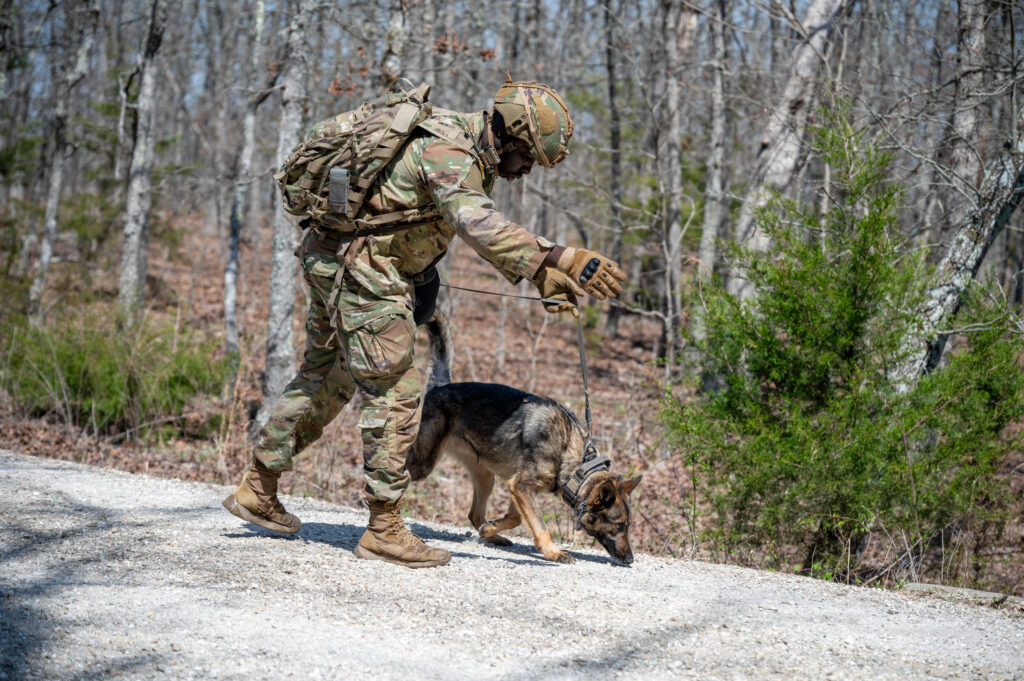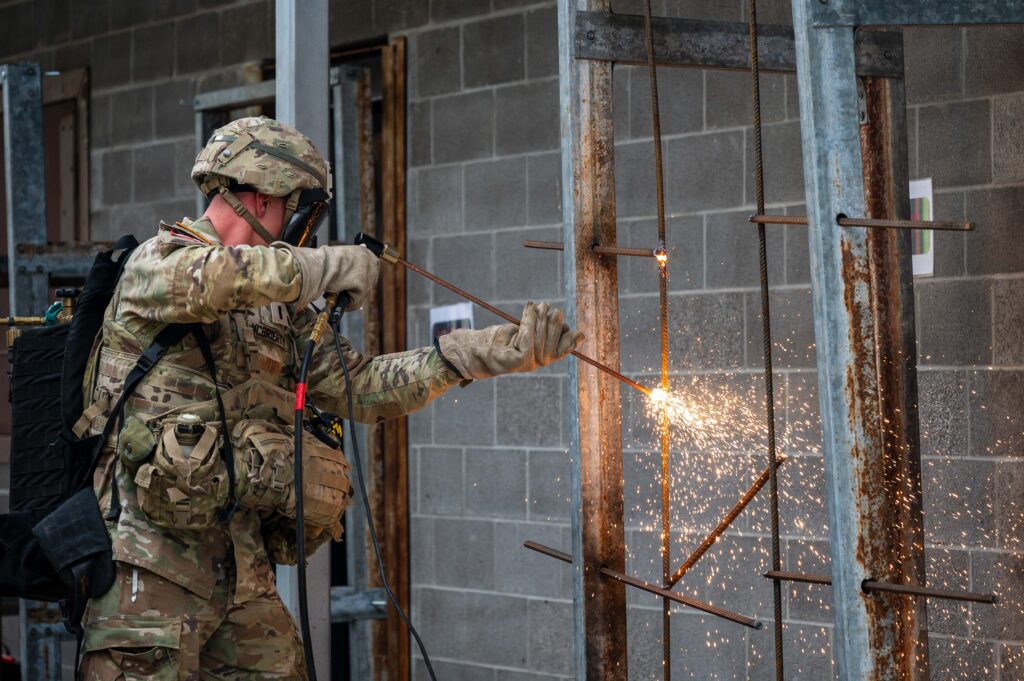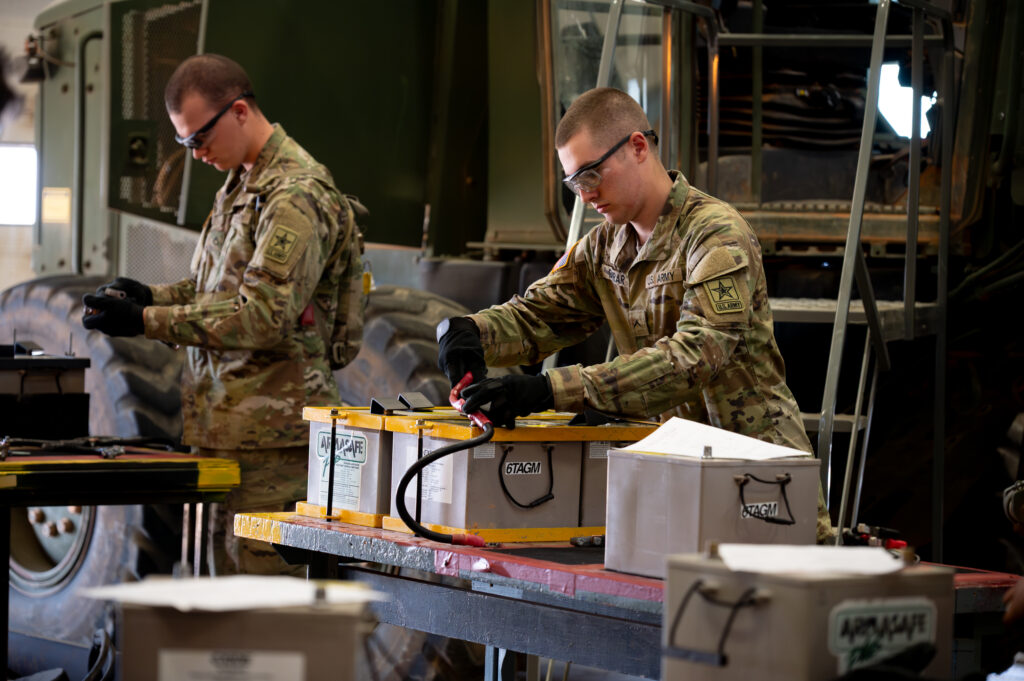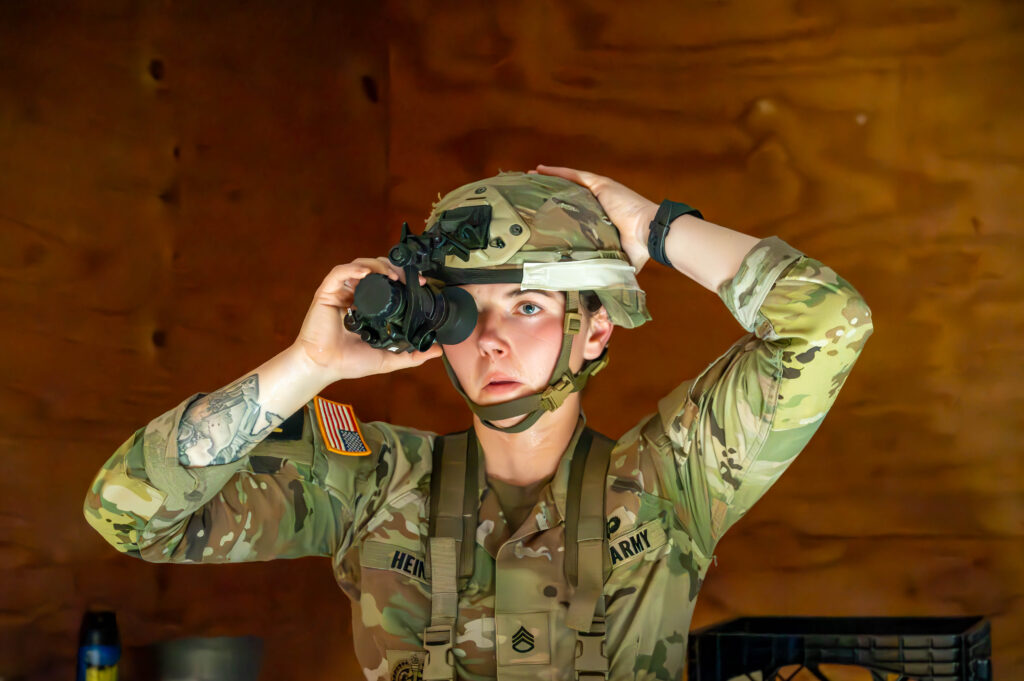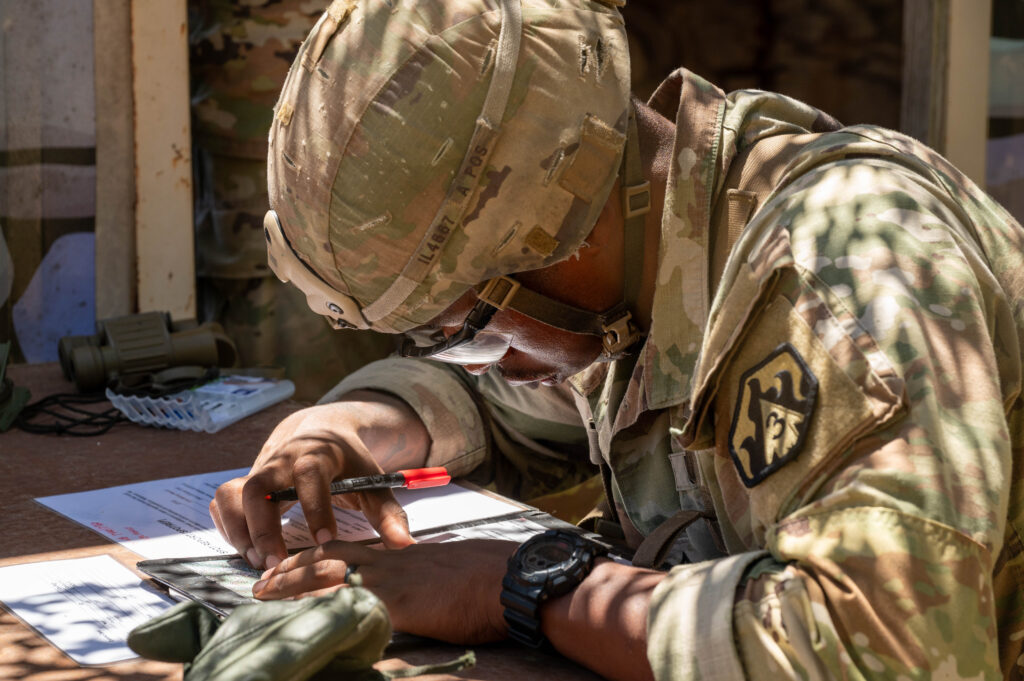Brian Hill
FORT LEONARD WOOD, Mo. (March 10, 2022) Fort Leonard Wood personnel facilitated an operational assessment last week in Alaska, to look closer at dry-decontamination technologies and improve cold-weather care for chemical, biological, radiological and nuclear-exposed victims.
The assessment — which took place during the joint-service, multi-national Exercise Arctic Eagle-Patriot 2022, or AEP22, from Feb. 22 to March 1 at the Anchorage Fire Training Center, in Anchorage, Alaska — was part of an ongoing effort to put more decontamination options on the table for America’s service members and emergency responders, said Drew Reichert, a physical scientist at the Maneuver Support Center of Excellence Homeland Defense Civil Support Office. The HDCSO develops capabilities and provides training to improve the Army’s effectiveness for operations in the homeland.
“When it’s cold, you want people to stay warm while getting them through the (decontamination) process as quickly as possible,” Reichert said. “Also, you may not always have a reliable water source, so it’s better to have another option, and that’s where dry decontamination comes in.”
The assessment in Alaska was one part of a nearly two-year effort, Reichert said.
“We started by bringing DOD and civilian partners together to understand the shortfalls and available solutions,” he said. “From there, we conducted a laboratory assessment to determine how effective the available technologies are. This operational assessment was a large-scale event to test the technologies and procedures in a realistic setting.”
Service members specializing in CBRN mitigation techniques aided in the assessment via hands-on utilization of the technologies and procedures, while experts from the HDCSO, the Armed Forces Radiobiology Research Institute, in Bethesda, Maryland, and the U.S. Army Corps of Engineers’ Cold Regions Research and Engineering Laboratory, in Hanover, New Hampshire, collected operational data, user feedback and verified standards for decontamination from particle hazards (i.e. radiological, toxic industrial materials, dusty chemical agents), Reichert said.
In addition to compiling comparisons from service members who have previously worked with wet decontamination methods, Reichert said some of the areas they looked at during the assessment included ease of use; the ability to perform tasks to standard; the logistical impact of the technology; the amount of waste produced; the impact on personnel; improvements for ambulatory and non-ambulatory patients; and how well the dry decontamination process protects individuals from further contamination, exposure or injury.
“We had service members participating who are experts at decontamination,” Reichert said. “To be able to get their feedback on this new process — this new technology — was exponentially helpful, because that wealth of knowledge and experience provided us with additional feedback on how we could improve the existing technology, along with how we can improve or refine the process, the procedures.”
Not all of the service members who participated work in a CBRN-related field. Some, like Spc. Camerin Holocomb, an intelligence analyst with the North Carolina National Guard’s Headquarters 60th Troop Command, were brought in as role players to provide another nuance of feedback from the perspective of a victim requiring decontamination.
“Since they have little experience utilizing decontamination, it was great to get their unbiased opinions,” Reichert said.
Holocomb said he enjoyed getting to be part of the process.
“It’s pretty cool we’re testing out the next generation of military technology,” he said. “So, if any cold-weather region were to be infected by a radiological agent, the military, governmental or civilian agencies would be able to perform decon without liquid.”
Besides human role players, another aspect of the experiment involved some four-legged participants from the Federal Emergency Management Agency and local Alaska search and rescue teams.
“Two years ago, they did a wet decon on the working dogs, and it didn’t go over very well — especially since it was cold outside,” Reichert said. “So, what they wanted to do was see how these dry-decon technologies could be implemented for working dogs. They were so helpful, not only in giving us feedback on the different technologies, but giving us exact procedures of how they believe it should be done. It was a great learning experience for everyone involved.”
Capt. Kenneth Moran, Health Physics Division chief at the Army Public Health Center, Aberdeen Proving Ground, Maryland, served as an additional observer and controller for the experiment. He said two of the most challenging obstacles for CBRN units is developing realistic training and effective equipment.
“Exercises like ARTIC EAGLE/PATRIOT are essential to help overcome those obstacles,” said Moran, who is part of what’s called a Radiological Advisory Medical Team, or RAMT, which provides medical advice and assistance following nuclear and radiological incidents. “Combining CBRN units and developers in environmentally-challenging training scenarios, we get closer to ensuring our forces have the training and equipment they need to effectively mitigate the hazards encountered in CBRN operations.”
Reichert said hosting an experiment like this provides more than just an opportunity to put new equipment in the hands of service members and collect data; it’s a chance to showcase emerging technologies for policy makers from across the Department of Defense — senior leaders from U.S. Northern Command, the National Guard Bureau, Army North and Joint Task Force Civil Support were on hand for this experiment.
“It’s important to get that additional site picture from senior leaders, to have an understanding that there is a gap out there, and to be able to get their viewpoints of how we can best integrate this into the Army processes — to get that technology out to the operating forces as quickly as possible,” Reichert said.
The results will be used in conjunction with data collected by the Defense Threat Reduction Agency and the Army Combat Capabilities Development Command’s Chemical Biological Center to inform DOD and civilian partners on personnel decontamination technology and process solutions, Reichert said.
“All of that data together will help us develop that next-generation personnel decon system for all of the services,” he said. “The other thing it does for us is it leads to mass-victim and patient decontamination modernization, with the possibility to increase flow and output, and reduce personnel and logistical burdens — not only for all the services, but for our civilian partners, who have been a part of this from the beginning.”
Pete Lofy, engagement officer to U.S. Northern Command for the Joint Program Executive Office for CBRN Defense — a partner in assessment design, funding and coordination — said the dry-decontamination effort has the potential to mitigate gaps in CBRN defense, victim medical care, domestic CBRN response, in addition to cold-weather decontamination.
“The culmination of this effort will constitute a major evolution in tackling this difficult problem,” he said.
Videos from the operational assessment are available on YouTube at https://www.youtube.com/watch?v=W0aY4XS5nsA and https://www.youtube.com/watch?v=cXNxPLFzyE4.
More photos from the exercise can be found at https://www.dvidshub.net/feature/ArcticEaglePatriot2022.


-30-
About Fort Leonard Wood
Fort Leonard Wood is a thriving and prosperous installation that has evolved from a small basic training post 80 years ago to a premier Army Center of Excellence that trains nearly 80,000 military and civilians each year.
Fort Leonard Wood is home to the U.S Army Maneuver Support Center of Excellence and three U.S. Army schools: the U.S. Army Engineer School; U.S. Army Chemical, Biological, Radiological and Nuclear School; and the U.S. Army Military Police School. In addition to training engineer, CBRN and military police specialties for the Army, Fort Leonard Wood also provides gender-integrated in-processing and Basic Combat Training for new Soldiers.
Fort Leonard Wood also hosts and trains with the largest Marine Corps Detachment and Air Force Squadron on any Army installation as well as a large Navy construction detachment.
More information about Fort Leonard Wood is at: https://home.army.mil/wood/index.php/about/mission
